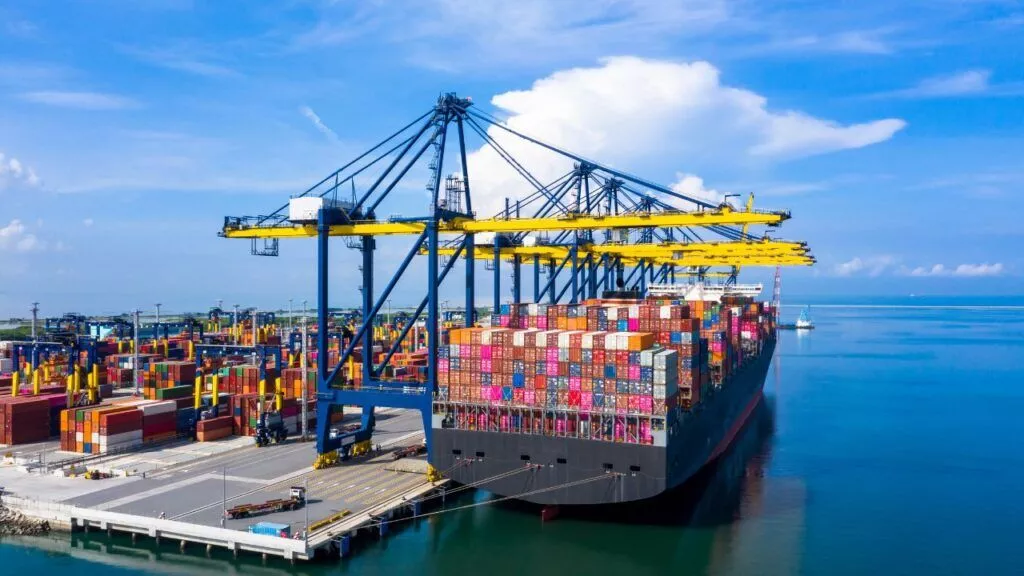- By TOP CHINA FREIGHT
- August 26, 2025
- Shipping
Shipping cost China to Sweden can quickly reduce profit margins if not carefully planned. Imagine securing a large order from a Chinese supplier, only to face unexpected fees, long transit times, and confusing logistics. This guide dives deep into transport options, cost-saving strategies, and operational tips to help your business ship efficiently and cost-effectively.

1.Understanding Your Shipping Cost China to Sweden
Sea, air, or rail, each with different transit times, costs, and handling processes.
LCL, FCL, or pallet shipments influence pricing.
FOB, CIF, or DDP affect who pays for shipping, insurance, and customs.
Correct HS code classification avoids fines.
Rates fluctuate with peak seasons and global fuel prices.
Actionable Tips:
- Calculate total landed cost, not just freight.
- Consolidate smaller shipments to reduce per-unit costs.
- Compare quotes from multiple freight forwarders.
| Transport Mode | Transit Time | Typical Cost | Best For | Notes |
|---|---|---|---|---|
| Sea Freight | 25–35 days | $900–$1,600 per 20ft container | Bulk goods, non-urgent | Cheapest for heavy cargo; slower transit |
| Air Freight | 5–10 days | $5–$12/kg | High-value, urgent goods | Fast, minimal handling |
| Rail Freight | 20–25 days | $1,300–$2,000 per container | Medium-volume shipments | Balanced cost-speed; fixed routes |
2.Choosing the Right Transportation Method

Sea Freight
Cost-Effective for Bulk Shipments
Best for:
Furniture, machinery, raw materials, bulk consumer goods.
Transit time:
25–35 days from Chinese ports to Swedish ports such as Gothenburg.
Cost strategy:
FCL is cheaper per unit than LCL; consolidation reduces costs for small shipments.
Tips:
- Book in advance during peak seasons.
- Avoid Chinese holidays to prevent surcharges.
- Partner with trusted forwarders for better space allocation.

Air Freight
Fast but Expensive
Best for:
Electronics, fashion, medical supplies.
Transit time:
5–10 days depending on airport and customs clearance.
Cost:
$5–$12 per kg, higher for oversized shipments.
Advantages:
Fast delivery, minimal handling, low damage risk.

Rail Freight
Balanced Option
Best for:
Medium-sized shipments requiring faster delivery than sea but lower cost than air.
Transit time:
20–25 days.
Cost:
$1,300–$2,000 per container.
Advantages:
Reliable schedule, eco-friendly, cost-effective.
Limitations:
Limited flexibility; last-mile trucking required.

Multi-Modal & Last-Mile Considerations
- Combine sea or rail with trucking for final delivery.
- Consider port proximity, customs efficiency, and destination distribution.
| Transport Mode | Transit Time | Typical Cost | Best For | Key Considerations |
|---|---|---|---|---|
| Sea Freight | 25–35 days | $900–$1,600/container | Bulk goods | Economical but slower, weather-dependent |
| Air Freight | 5–10 days | $5–$12/kg | Urgent, high-value | Expensive, minimal risk |
| Rail Freight | 20–25 days | $1,300–$2,000/container | Medium shipments | Requires last-mile planning |
Tips:
- Evaluate shipment size, urgency, and budget together.
- Use multi-modal routes to optimize cost and transit time.
- Monitor forwarder performance and adjust strategies seasonally.
3.Seasonal Shipping Cost Variations
Shipping cost China to Sweden varies with peak seasons:
- Chinese New Year (Jan–Feb): Container shortages; prices rise 10–20%.
- Summer Holiday (Jun–Aug): High demand for consumer goods; sea freight surcharges.
- Pre-Christmas (Oct–Dec): Air freight demand spikes for electronics and fashion.
Tip:
Plan shipments early or off-peak to reduce costs and avoid delays.
4.Avoiding Hidden Fees
Hidden fees inflate shipping cost:
- Port handling, customs clearance, demurrage, local trucking, storage.
Prevention:
- Request all-inclusive quotes.
- Schedule shipments during off-peak periods.
- Use forwarders experienced with Swedish ports.
| Hidden Fee Type | Typical Cost | Prevention Strategy |
|---|---|---|
| Demurrage | $50–$100/day | Timely pickup |
| Port Handling Fees | $100–$300 | Confirm before booking |
| Customs Clearance | $50–$200 | Use experienced broker |
| Local Delivery | $200–$500 | Include in contract |
5.Documentation and Compliance
Key documents:
- Commercial Invoice
- Packing List
- Bill of Lading / Air Waybill
- Certificate of Origin
- Import Licenses / Certificates
Tip:
Automate documentation to reduce errors and customs delays.
6.Cost-Saving Strategies
Combine shipments.
Use slower transport for non-urgent goods.
Negotiate volume discounts.
Protect against losses during transit.
Certain goods may have reduced tariffs.
Reduce delays and hidden fees.
7.Shipment Tracking and Delivery Optimization
- Real-time shipment tracking reduces storage fees.
- Plan last-mile delivery in Sweden to minimize trucking costs.
- Use warehouses near ports to streamline distribution.
Case Example:
A Swedish electronics importer consolidated three air shipments into one rail container. Shipping cost dropped 15%, and lead time decreased by 4 days.
8.Choosing Ports and Routes
Chinese ports:
Shanghai, Shenzhen, Ningbo, Guangzhou – competitive rates, frequent departures.
Swedish ports:
Gothenburg – main entry point; efficient customs.
Alternative:
Ship to nearby European ports (e.g., Hamburg, Rotterdam) + trucking to Sweden.
Tip:
Evaluate routes based on cargo type, transit time, and shipping cost.
9.Recommendations by Cargo Type
| Cargo Type | Recommended Transport | Notes |
|---|---|---|
| Bulk materials | Sea Freight | Cost-effective, slow transit |
| Electronics | Air Freight | Fast, minimal handling |
| Furniture / Home goods | Sea or Rail | Consolidate for lower cost |
| Medium-sized machinery | Rail Freight | Balanced speed and cost |
10.Packaging and Weight Optimization
- Lightweight materials reduce volumetric weight for air freight.
- Efficient packing maximizes container space.
- Use protective packaging to avoid damage and insurance claims.
Tips:
- Standardize pallet sizes.
- Avoid overpacking to reduce dimensional weight.
- Coordinate with suppliers for optimized packaging.
Conclusion
Optimizing shipping cost from China to Sweden requires careful transport selection, seasonal planning, proper documentation, and smart cost-saving strategies. Consolidating shipments, using multi-modal solutions, partnering with experienced freight forwarders, and leveraging technology can reduce expenses while ensuring timely delivery. Request a personalized quote to see how much you can save and streamline your China-to-Sweden shipments.
Need a Shipping Quote?
If you want expert guidance and peace of mind, our team is ready to assist.
TJ China Freight offers tailored solutions to help businesses of all sizes ship more reliably from China.
FAQs
Q1:How can I reduce shipping cost China to Sweden for small shipments?
- Consolidate multiple small orders into one shipment (LCL).
- Use rail freight for medium-sized shipments instead of air.
- Negotiate rates with freight forwarders for recurring shipments.
Q2:Which Chinese ports offer the most cost-effective shipping to Sweden?
- Shanghai, Shenzhen, Ningbo, and Guangzhou are the main ports with competitive rates.
- Choosing high-throughput ports reduces waiting times and surcharges.
Q3:How long does shipping from China to Sweden typically take?
- Sea freight: 25–35 days
- Rail freight: 20–25 days
- Air freight: 5–10 days
Transit times may vary due to customs, peak seasons, and last-mile delivery.
Q4:What essential documents are needed for shipping to Sweden?
- Commercial Invoice
- Packing List
- Bill of Lading / Air Waybill
- Certificate of Origin
- Import Licenses or Certificates for restricted goods
Q5:Is cargo insurance necessary for shipping from China to Sweden?
- Yes, it protects against damage, theft, or loss.
- Options include all-risk, named-perils, or carrier liability.
